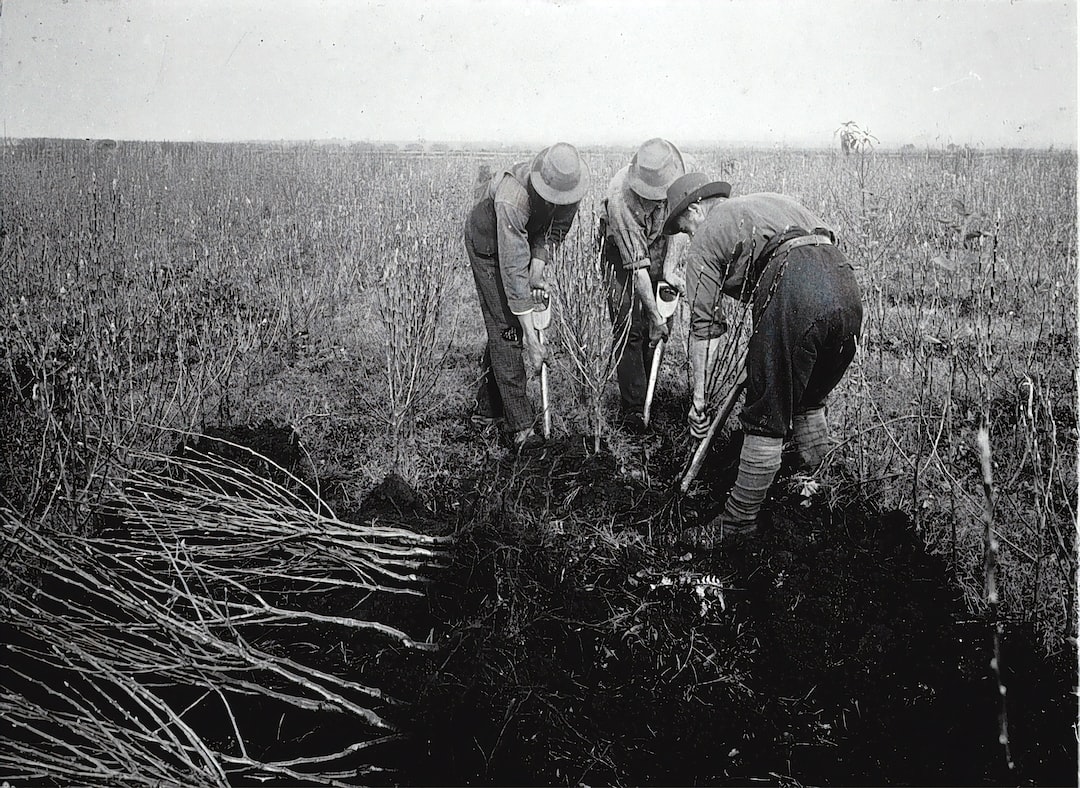Harvesting Carrots: A Guide to Knowing When They’re Ready to Pick

Carrot harvesting is a crucial step in the process of growing carrots. It is the culmination of months of hard work and patience, and it is the moment when you finally get to enjoy the fruits of your labor. Proper timing and techniques are crucial for a successful harvest, as they can greatly impact the quality and yield of your carrots.
Key Takeaways
- Carrots are a popular root vegetable that require proper timing and techniques for harvesting.
- Understanding the growth and development of carrots is important for determining when they are ready to be harvested.
- Signs that carrots are ready to be harvested include their size, color, and texture.
- Proper timing for carrot harvesting is crucial for maximizing yield and flavor.
- Tools and equipment needed for carrot harvesting include a digging fork, gloves, and a storage container.
Understanding Carrot Growth and Development
To effectively harvest carrots, it is important to understand their growth and development stages. Carrots go through several stages of growth, starting from seed germination to root development and finally to maturity. By understanding these stages, you can better identify when your carrots are ready to be harvested.
The first stage of carrot growth is seed germination. This is when the carrot seeds begin to sprout and develop into seedlings. During this stage, it is important to provide the right conditions for the seeds to germinate, such as proper moisture and temperature.
The second stage is root development. This is when the carrot roots start to grow and expand beneath the soil. It is during this stage that the carrots develop their characteristic shape and size. It is important to monitor the growth of the roots and ensure that they are developing properly.
The final stage is maturity. This is when the carrots have reached their full size and are ready to be harvested. It is important to identify the signs that indicate that your carrots are ready for harvest, which will be discussed in the next section.
Signs that Carrots are Ready to be Harvested
There are several physical signs that indicate that your carrots are ready to be harvested. The first sign is the size of the carrot. Carrots should reach their full size before they are harvested, which can vary depending on the variety of carrot you are growing. Generally, carrots should be around 1 inch in diameter at maturity.
Another sign is the color of the carrot. Carrots should have a vibrant orange color when they are ready to be harvested. If the carrots are still pale or have a greenish tint, they are not yet mature and should be left in the ground for a little longer.
The texture of the carrot is also an important indicator. Carrots should have a firm and crisp texture when they are ready to be harvested. If the carrots feel soft or mushy, they are overripe and may not taste as good.
The Importance of Proper Timing for Carrot Harvesting
| Timing Factors | Impact on Carrot Quality |
|---|---|
| Days to Maturity | Determines when carrots are ready for harvest |
| Soil Moisture | Affects carrot size, shape, and texture |
| Temperature | Affects carrot flavor and sweetness |
| Time of Day | Harvesting in the morning results in crisper carrots |
| Harvesting Technique | Properly pulling carrots from the ground prevents damage |
Proper timing is crucial for the quality and yield of your carrot harvest. Harvesting too early can result in small and underdeveloped carrots, while harvesting too late can lead to woody and bitter-tasting carrots.
Harvesting carrots at the right time ensures that you get the best flavor and texture from your carrots. Carrots that are harvested at their peak of maturity are sweeter and more tender compared to those that are harvested too early or too late.
Timing also affects the yield of your carrot harvest. Harvesting carrots at the right time allows you to maximize the number and size of carrots you can harvest. This is especially important if you have limited space or if you are growing carrots for commercial purposes.
Tools and Equipment Needed for Carrot Harvesting
To effectively harvest carrots, you will need a few essential tools and equipment. The first tool you will need is a garden fork or a shovel. This tool is used to loosen the soil around the carrots before pulling them out. It is important to be gentle when using the fork or shovel to avoid damaging the carrots.
Another tool you will need is a pair of gardening gloves. This will protect your hands from getting dirty or injured while harvesting the carrots. It is also helpful to have a bucket or a basket to collect the harvested carrots.
Techniques for Harvesting Carrots

Harvesting carrots requires a few simple techniques to ensure that the carrots are not damaged during the process. Here is a step-by-step guide to harvesting carrots:
1. Loosen the soil: Use a garden fork or shovel to gently loosen the soil around the carrots. Be careful not to damage the carrots while doing this.
2. Pull out the carrots: Once the soil is loosened, gently pull out the carrots from the ground. Hold the carrot near the base and pull straight up to avoid breaking the carrot.
3. Trim the tops: After pulling out the carrots, trim off the tops using a pair of gardening shears. This will help prolong the shelf life of the carrots.
4. Rinse and dry: Rinse the harvested carrots with water to remove any dirt or debris. Allow them to dry completely before storing or using them.
Sorting and Storing Carrots after Harvesting
After harvesting, it is important to sort and store your carrots properly to maximize their shelf life. Here are some tips for sorting and storing carrots:
1. Sort by size: Sort your harvested carrots by size to make it easier to use them in recipes or for storage purposes. This will also help you identify any damaged or spoiled carrots that need to be discarded.
2. Remove excess soil: Before storing your carrots, gently brush off any excess soil. This will help prevent moisture buildup and prolong the shelf life of your carrots.
3. Store in a cool, dark place: Carrots should be stored in a cool, dark place to maintain their freshness and flavor. A root cellar or a refrigerator is an ideal storage location for carrots.
4. Use breathable containers: Store your carrots in breathable containers, such as mesh bags or perforated plastic bags. This will allow air circulation and prevent moisture buildup, which can cause rotting.
Common Mistakes to Avoid When Harvesting Carrots
There are several common mistakes that people make when harvesting carrots. One of the most common mistakes is harvesting carrots too early. This can result in small and underdeveloped carrots that lack flavor and texture.
Another common mistake is harvesting carrots too late. Carrots that are left in the ground for too long can become woody and bitter-tasting. It is important to monitor the growth of your carrots and harvest them at their peak of maturity.
It is also important to avoid damaging the carrots during the harvesting process. Be gentle when loosening the soil and pulling out the carrots to avoid breaking or bruising them.
Tips for Maximizing Carrot Yield during Harvesting
To maximize the yield of your carrot harvest, there are a few tips you can follow. First, make sure to space out your carrot plants properly when planting. Carrots need enough room to grow and develop properly, so overcrowding can result in smaller carrots.
Second, thin out your carrot plants as they grow. This involves removing some of the smaller or weaker plants to allow the remaining plants to have more space and resources to grow.
Finally, water your carrot plants regularly and consistently. Carrots need consistent moisture to grow properly, so make sure to water them regularly, especially during dry periods.
Enjoying the Fruits of Your Labor
In conclusion, proper carrot harvesting techniques are crucial for a successful harvest. Understanding the growth stages of carrots and identifying the signs that indicate they are ready to be harvested are important steps in ensuring a high-quality yield.
By using the right tools and techniques, you can minimize damage to the carrots during harvesting and maximize their shelf life after harvesting. Avoiding common mistakes and following tips for maximizing carrot yield will help you enjoy the delicious and nutritious carrots you have grown with care and patience. So go ahead, enjoy the fruits of your labor!
If you’re wondering how to determine the perfect time to harvest your carrots, look no further than this informative article from Lawn World. This comprehensive guide provides valuable insights and tips on when and how to harvest carrots for optimal flavor and texture. From checking the size and color of the carrots to assessing the soil conditions, this article covers all the essential factors to consider. To learn more about this topic, visit https://www.lawnworld.com/how-to-harvest-carrots.



